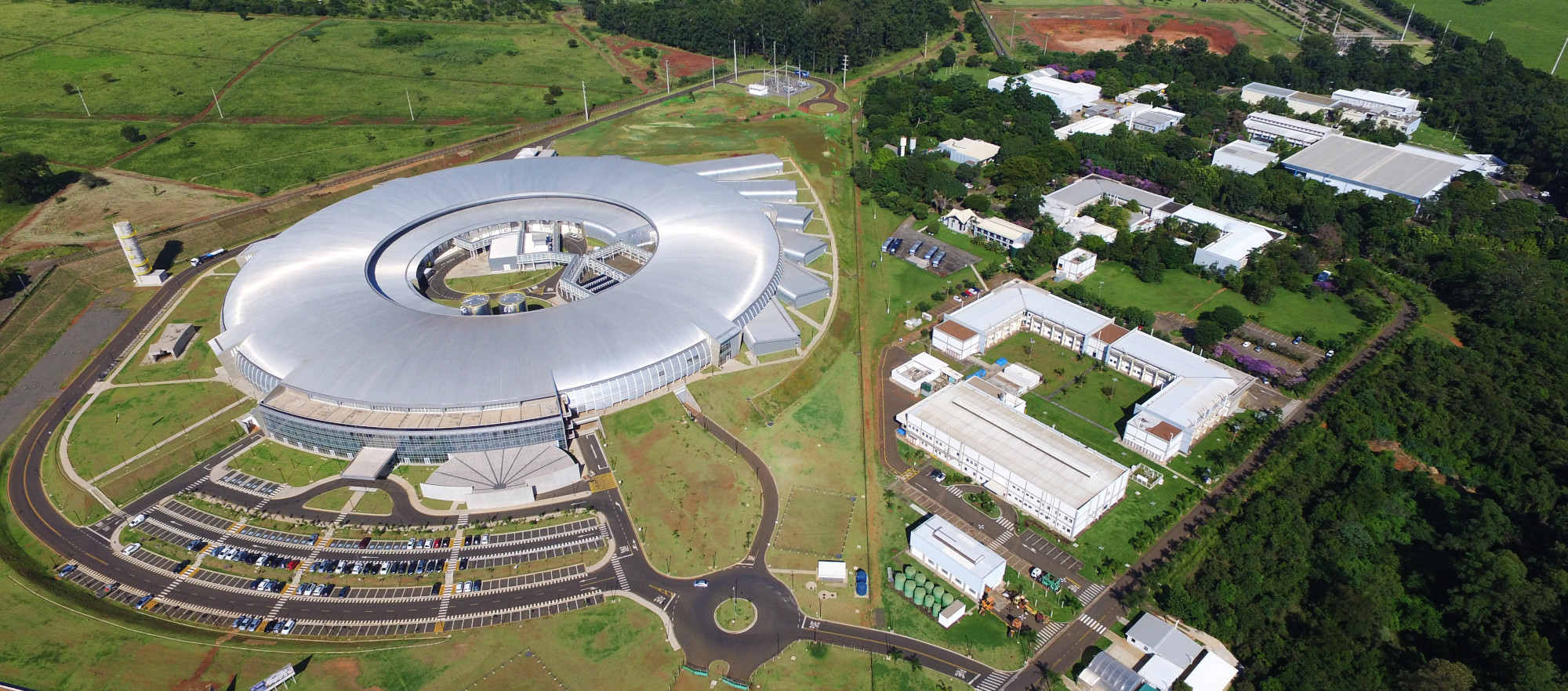The Brazilian Synchrotron Light Laboratory (LNLS) is part of the Brazilian Center for Research in Energy and Materials (CNPEM), in Campinas (SP), a private non-profit organization under the supervision of the Brazilian Ministry of Science, Technology, and Innovations (MCTI).
LNLS is responsible for operating Sirius, the largest and most complex scientific infrastructure ever built in Brazil and one of the most advanced synchrotron light sources in the world. This state-of-the-art laboratory allows the investigation of the composition and structure of matter in its most varied forms, opening new perspectives for research in areas such as materials science, nanotechnology, biotechnology, environmental sciences, and many others.
The Laboratory houses multi-user facilities, open to the Brazilian and international scientific community, and provides a sophisticated scientific instrument for academic and industrial research, benefiting thousands of scientists every year. The first operational phase of the Brazilian synchrotron light source includes 14 experimental stations, 10 of which are fully operational and 4 are at different stages of assembly or commissioning. In the future, Sirius will be capable of accommodating up to 38 beamlines.
Sirius allows cutting-edge research to be carried out, contributing to the solution of major scientific and technological challenges, such as the development of medicines and treatments for diseases, new fertilizers, more resistant plant species and other technologies for agriculture, renewable energy sources, among many other applications, with the potential to generate major economic and social impacts.
To support these researches, LNLS has highly qualified professionals, who provide technical knowledge so that researchers from any area have access to this tool in their investigations, even if they do not have prior knowledge in the use of synchrotron light sources. Its operating model allows the maintenance of a multi and interdisciplinary interaction environment.
Created in 1984, the Brazilian Synchrotron Light Laboratory was responsible for the construction and operation of the first synchrotron light source in the Southern Hemisphere. Called UVX, the light source operated from 1997 to 2019, benefiting approximately one thousand researchers each year. Throughout this trajectory, LNLS sought to attract researchers and engineers, whose training would promote the development of important technological fields for Brazil.
LNLS also developed locally the knowledge about the construction of accelerators and beamlines, with the production of components and equipment in Brazil, whenever possible. This strategy reduced the cost of building its first synchrotron light source, in addition to allowing the mastery of knowledge to maintain and update the machine and the scientific instrumentation connected to it. The technical and scientific knowledge accumulated over more than three decades, by scientists, engineers, technicians, and specialists in several areas of knowledge, made possible the development of Sirius, an extremely sophisticated and worldwide competitive scientific equipment.

Sirius, the new Brazilian synchrotron light source, is the largest and most complex research infrastructure ever built in the Brazil. This machine functions as a great microscope, which reveals the molecular, atomic and electronic structure of a wide range of materials and allowing research in practically any field, with the potential to solve the major problems of the present.
Sophisticated and effervescent environment for research and development, unique in Brazil and present in few scientific centers in the world, the Brazilian Center for Research in Energy and Materials (CNPEM) is a private non-profit organization, under the supervision of the Ministry of Science, Technology and Innovations (MCTI). The Center operates four National Laboratories and is the birthplace of the most complex project in Brazilian science – Sirius – one of the most advanced synchrotron light sources in the world.
CNPEM brings together highly specialized multi-thematic teams, globally competitive laboratory infrastructures open to the scientific community, strategic lines of investigation, innovative projects in partnership with the productive sector and training of researchers and students. The Center is an environment driven by the search for solutions with impact in the areas of Health, Energy and Renewable Materials, Agro-environment, and Quantum Technologies.
As of 2022, with the support of the Ministry of Education (MEC), CNPEM expanded its activities with the opening of the Ilum School of Science. The interdisciplinary higher course in Science, Technology and Innovation adopts innovative proposals with the aim of offering excellent, free, full-time training with immersion in the CNPEM research environment.
Through the CNPEM 360 Platform, it is possible to explore, in a virtual and immersive way, the main environments and activities of the Center, visit CNPEM 360.

The Brazilian Synchrotron Light Laboratory (LNLS) is part of the Brazilian Center for Research in Energy and Materials (CNPEM) with three other National Laboratories: the Brazilian Biosciences National Laboratory (LNBio), the Brazilian Biorenewables National Laboratory (LNBR), and the Brazilian National Nanotechnology Laboratory (LNNano).
The visits aim to stimulate interest in science and to promote scientific and technological dissemination. The program is aimed at high school students, technical school students and higher education students (undergraduate and graduate). CNPEM also welcomes technical visits from companies and other research, development and innovation organizations.

In 1987 the construction project for the first large Brazilian scientific infrastructure was initiated, planned be a multi-user laboratory open to the scientific community. Between 1987 and 1997, the Brazilian Synchrotron Light Laboratory (LNLS) developed the technology for the construction of the first synchrotron light source in the Southern Hemisphere, UVX.
This trajectory full of challenges allowed LNLS, 30 years after its inception, to continue its pioneering vocation with the construction of the new synchrotron light source Sirius, one of the most advanced in the world.